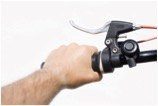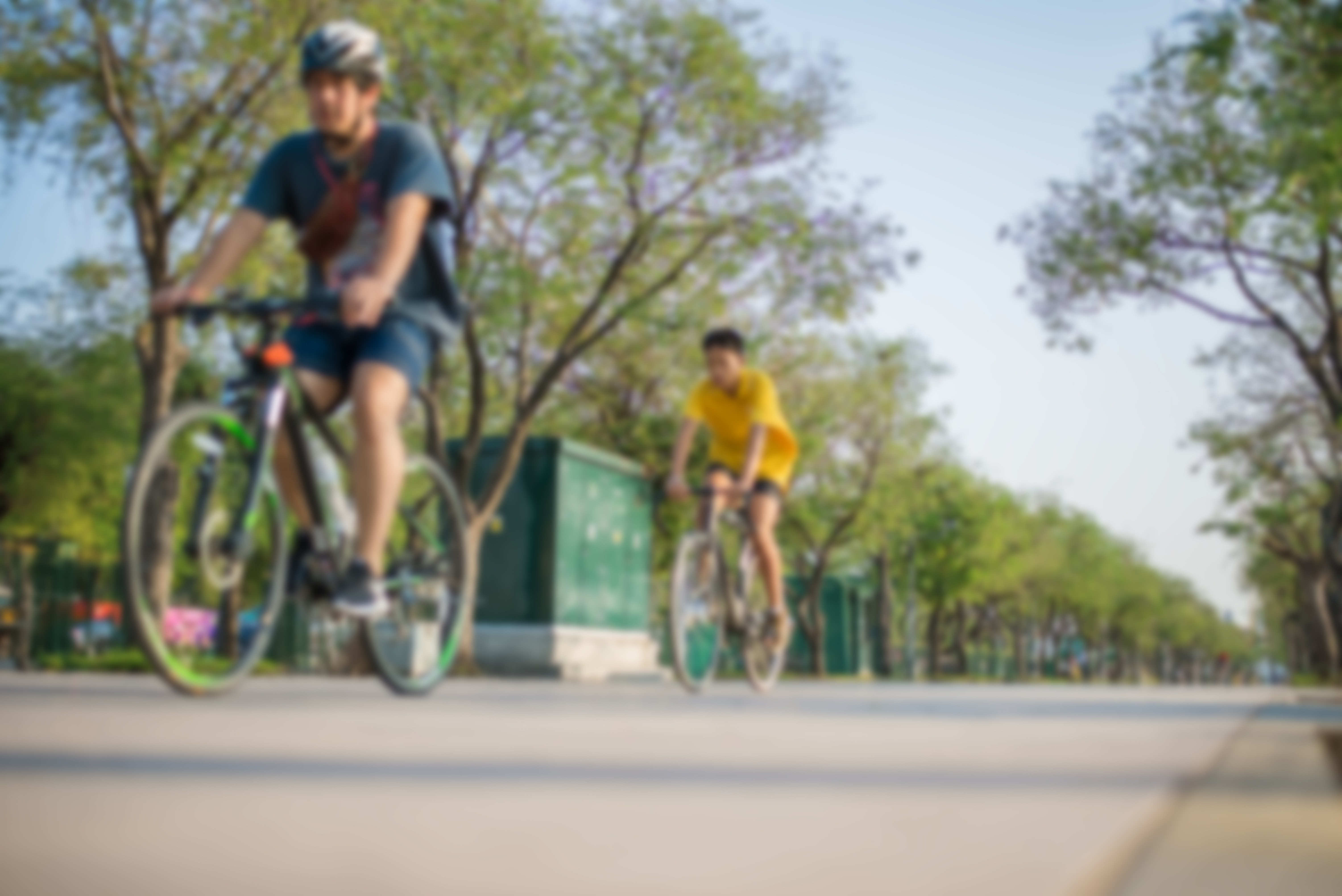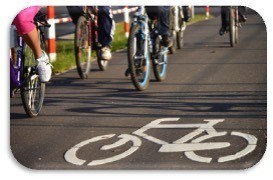![]()
 It’s as easy as riding a bike. You’ve heard this phrase more times than you could count, right? Well, the physical part of getting on a bike and riding it may be very simple, but getting on the road as a bicyclist is a different story. If you are going to be a bike rider on the public streets, you should follow all of the rules and guidelines below.
It’s as easy as riding a bike. You’ve heard this phrase more times than you could count, right? Well, the physical part of getting on a bike and riding it may be very simple, but getting on the road as a bicyclist is a different story. If you are going to be a bike rider on the public streets, you should follow all of the rules and guidelines below.
First of all, there are a few quick hints for a bicyclist to follow when using public streets.
1. A bicyclist should always obey all traffic laws, signs, and signals.
2. Never ride opposite the flow of traffic.
3. Stop at all stop signs and stop at red lights.
4. A person operating a bicycle on a one-way road with two or more marked traffic lanes may ride as near as possible to the left curb or edge of the road.
5. Individuals who are riding two abreast shall not impede the normal reasonable flow of traffic on the road. Individuals riding two abreast on a “laned” road must ride in a single lane.
6. Bicyclists may ride on the shoulder of the road.
That all sounds fairly easy but there is a lot more to know and understand as a bicyclist. Keep reading and try to remember all of these rules you need to obey while riding on a public road.
1. Bicyclists may signal a right turn using either their left arm pointing up or their right arm pointed horizontally.
2. A person operating a bicycle on a road moving slower than the other traffic shall ride as near as possible to the right curb or edge of the road unless:
a. The person is overtaking and passing another vehicle proceeding in the same direction;
b. The person is preparing for a left turn at an intersection or onto a private road or driveway;
c. There are unsafe conditions in the road such as fixed or moving objects, parked or moving vehicles, pedestrians, animals, potholes, or debris; or
d. The person operating a bicycle in an outside lane that is less than 14 feet in width and doesn’t have a designated bicycle lane adjacent to that lane; or
e. The lane is too narrow for a bicycle and a motor vehicle to safely travel side by side.
Those are a little complicated. The bottom line on the last one is to try to safely drive your bike when going slower than traffic. Use your common sense and try to remember the rules you just read.
Now some people learn better by telling them what not to do. So for those, let’s give you a quick list.
1. No bicycle shall be used to carry more than the number of individuals it is designated or equipped for.
2. No person riding a bike shall attach the same or himself to a streetcar or vehicle upon a road.
3. No person operating a bicycle shall carry any package, bundle, or article which prevents him/her from keeping at least one hand on the handlebars.
4. Do not ride on a seat unless it is a permanent or regular seat.
In many cities you will notice that bicyclist have their own lane. These are called Bike Lanes. In many other cities there are lane markings referred to as “Sharrows”. According to the Bicycle Coalition of Greater Philadelphia,
the “bike lane” is for the use of bicycles only and the “Sharrow” does not mean bicycles have to be in the left lane. It is just a reminder to drivers to watch for bicyclists. Both cars and drivers can and should use both lanes.
And finally, let’s talk about what equipment every bicycle should have when operating on a public road.

1. Every bicycle shall be equipped with a brake that will enable the operator to make the braked wheels skid on dry, level, clean pavement.
2. Hearing-impaired bicycle riders may display a safety flag.
3. Every bicycle in use at nighttime should be equipped with:
a. •A lamp on the front which emits a white light visible at a distance of at least 500 feet to the front of the bicycle;
b. •A red, DPS-approved reflector on the rear must be visible from distances of 50 feet to 300 feet. (A red light on the rear visible from a distance of 500 feet may be used in addition to the red reflector.)
So now when someone says, it’s as easy as riding a bike, you can counter with the argument that riding a bike may be the most complex thing one can do, if they plan to ride safely.



